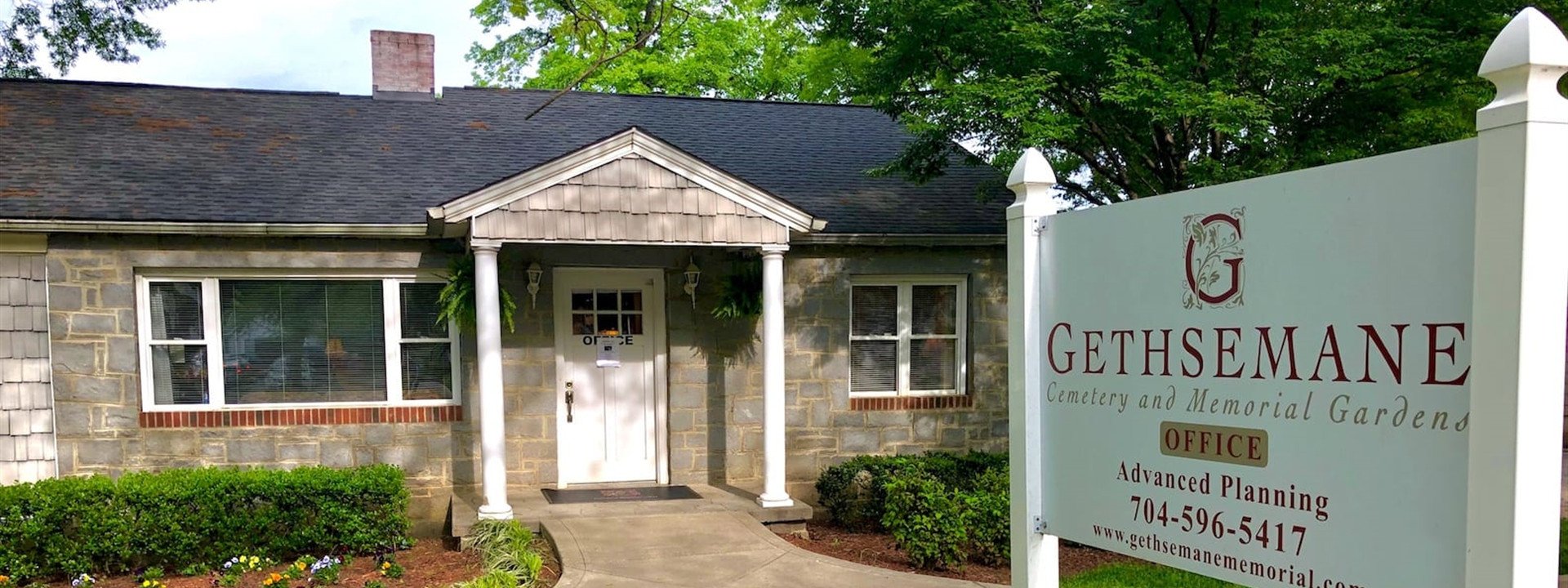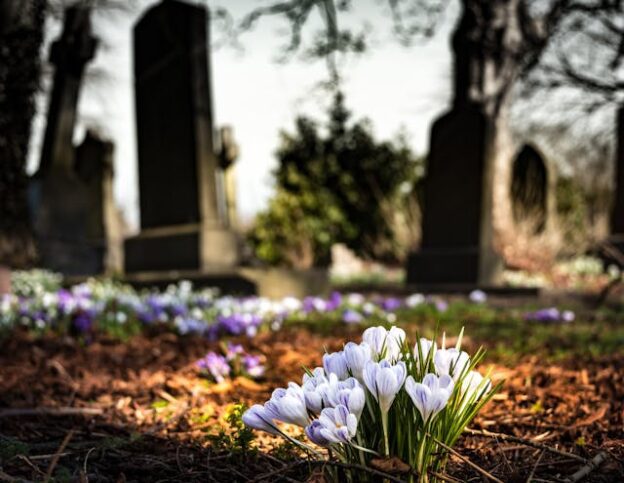
Online Cemetery Preplanning for Veterans in Huntersville, NC
In the heart of our community, we hold a profound respect and gratitude for those who have served our nation. Veterans, with their unwavering commitment and sacrifice, deserve to be honored in death as they were in life. Nowadays, Huntersville, NC cemeteries are embracing the digital age to facilitate online pre-planning for veterans’ cemetery arrangements, ensuring that our heroes’ final wishes are respected and their legacies preserved.
The Importance of Pre-Planning for Veterans
A Tribute to Service: Pre-planning offers a way to ensure that a veteran’s service is appropriately honored. From military honors to the choice of a final resting place, every detail reflects the dignity and respect owed to those who have served.
Ease and Accessibility: The digital landscape has transformed how we approach end-of-life planning. For veterans and their families in Huntersville, NC, cemeteries offering online pre-planning services provide a convenient, accessible way to make these important arrangements from anywhere, at any time.
Peace of Mind: Knowing that arrangements have been made in advance can offer immense peace of mind to veterans and their loved ones. It alleviates the burden of making difficult decisions during times of grief, allowing families to focus on commemorating their loved one’s life and service.
Navigating Online Pre-Planning for Veterans
Understanding Benefits and Entitlements: Veterans are entitled to certain benefits, including burial in a national cemetery, a grave marker, and a flag. Online resources can help families understand these benefits and how to incorporate them into their pre-planning.
Selecting the Right Services: Online pre-planning platforms offer various services tailored to veterans, from ceremonial honors to the inclusion of military symbols on memorials. It’s important to select a service that aligns with the veteran’s wishes and honors their service appropriately.
Documenting Wishes: One of the key advantages of online pre-planning is the ability to document and store all arrangements securely. This ensures that when the time comes, the veteran’s wishes are clearly communicated and can be executed as planned.
The Role of Huntersville Cemeteries
In Huntersville, NC, cemeteries play a pivotal role in honoring our veterans. By offering online pre-planning services, they ensure that veterans’ final arrangements are made with the respect and dignity they deserve. These cemeteries work closely with veterans’ families to provide guidance, support, and the assurance that their loved one’s service will be honored in a manner befitting their sacrifice.
A Salute to Our Beloved Veterans and Their Families
 As we continue to embrace the future, the importance of honoring our past remains paramount. For our veterans, pre-planning cemetery arrangements is a final act of service — to themselves and their families. It’s a thoughtful way to ensure that their legacy is preserved and their service forever remembered.
As we continue to embrace the future, the importance of honoring our past remains paramount. For our veterans, pre-planning cemetery arrangements is a final act of service — to themselves and their families. It’s a thoughtful way to ensure that their legacy is preserved and their service forever remembered.
We urge veterans and their families in Huntersville, NC, to discover the advantages of online pre-planning with Huntersville, NC cemeteries. This action is more than a mere convenience; it serves as a homage to a lifetime of dedication and a pledge to cherish that commitment for future generations. For details on initiating this significant journey, please contact us. Allow Gethsemane Cemetery and Memorial Gardens to assist in paying tribute to your hero with the esteem and reverence they merit.
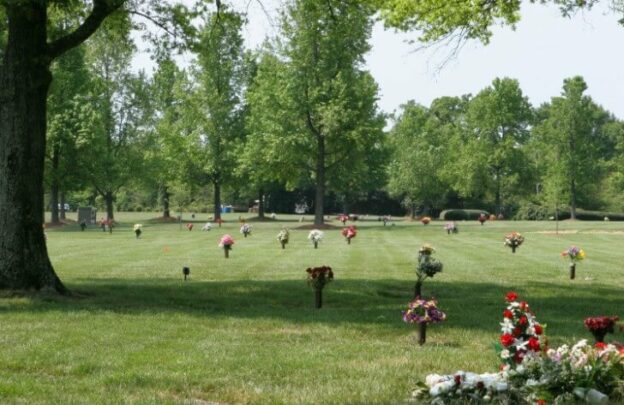
The Benefits of Planning Ahead and Pre-Purchasing Cemetery Plots
In the tapestry of life’s planning, few threads are as delicate and yet as crucial as making arrangements for our final resting place. Charlotte, NC cemeteries stand as serene guardians of memories, where the past meets the present in a quiet celebration of life. Pre-purchasing a cemetery plot is not just an act of foresight; it’s a gesture of love and care for those we will someday leave behind.
The Value of Planning Ahead
Emotional Solace: Making arrangements for a cemetery plot in advance offers emotional peace of mind to both you and your loved ones. It alleviates the burden of decision-making during times of grief, allowing families to focus on healing and remembrance.
Financial Prudence: Economically, pre-purchasing allows you to secure today’s prices for a future need, protecting against the inevitable rise in costs due to factors like inflation and demand in Charlotte, NC. Cemeteries offer various payment plans, making this option both affordable and practical.
Personal Choice: Choosing your final resting place offers a chance to express your preferences and values. Whether it’s a location with a special meaning, the type of plot, or proximity to loved ones, pre-purchasing gives you control over these important decisions.
The Process Simplified
Research and Reflection: Begin with introspection about what matters most to you in a final resting place, followed by research into Charlotte, NC, cemeteries. Consider factors like location, amenities, and the types of plots or memorials they offer.
Consultation and Comparison: Reach out to cemetery administrators to gather more information and arrange visits. Comparing options helps in making an informed decision that resonates with your wishes and budget.
Decision and Documentation: Once you’ve selected the right cemetery and plot, the next steps involve finalizing the purchase and ensuring all agreements are documented. This includes understanding maintenance and care provisions to ensure your resting place remains a testament to your life and legacy for generations.
Peace for Today, Preparation for Tomorrow
The decision to pre-purchase a cemetery plot in Charlotte is more than just a transaction; it’s an act of kindness towards yourself and those you love. It reflects a thoughtful approach to life’s cycle, ensuring that when the time comes, your legacy is honored according to your wishes, and your family is spared from the stress of making these decisions amidst grief.
Community Connection: Charlotte, NC, cemeteries are more than just spaces for eternal rest; they are vibrant communities that celebrate life, history, and legacy. By choosing to plan ahead, you’re also choosing a place in this community, rooted in the rich tapestry of Charlotte’s heritage.
A Sustainable Choice: Beyond the immediate benefits, pre-purchasing plots contribute to the sustainability of cemetery spaces, allowing for better planning and preservation of these sacred grounds. It ensures that Charlotte’s cemeteries remain beautiful, serene, and well-maintained sanctuaries of remembrance.
Joining Hands with Tomorrow
 As we walk the path of life, taking steps to secure a final resting place is a profound act of foresight that mirrors our love for life and those who share it with us. Charlotte, NC cemeteries offer a sanctuary not just for those who have passed but for the living – a place of peace, reflection, and connection.
As we walk the path of life, taking steps to secure a final resting place is a profound act of foresight that mirrors our love for life and those who share it with us. Charlotte, NC cemeteries offer a sanctuary not just for those who have passed but for the living – a place of peace, reflection, and connection.
If you’re considering pre-purchasing a cemetery plot, Gethsemane Cemetery and Memorial Gardens invite you to explore the serene beauty and tranquil spaces of our cemetery. Together, we can ensure that your final wishes are honored, providing peace of mind for you and your loved ones. Reach out to us for more information and take the first step towards a future filled with peace and preparation.
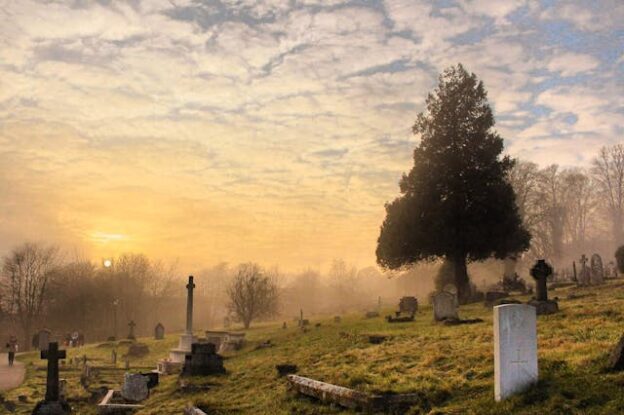
Dealing with Grief and Healing During Cemetery Services
In the serene enclaves of North Carolina, particularly within Matthews, NC cemeteries, these spaces transform into sanctuaries where narratives are cherished and legacies celebrated. Navigating the path of grief during cemetery burials is an intensely personal experience, reflecting the distinctiveness of the lives we commemorate and grieve. Acknowledging the sorrow of loss, yet finding solace in the embrace of our community, can offer a way forward towards healing.
Embracing Grief: A Shared Human Experience
Grief, in its many forms, reflects the depth of love and connection we feel for those we’ve lost. It’s a testament to the bonds that connect us, even in absence. In Matthews, NC, cemeteries serve as a backdrop to the complex dance of remembering and letting go, offering a space where grief can be expressed freely and support can be found.
Steps Towards Healing in the Heart of Matthews, NC
Acknowledging Your Feelings: It’s important to recognize and accept your emotions during this time. Grief can manifest in various ways, including sadness, anger, confusion, or even relief. All these feelings are valid.
Seeking Support: Leaning on friends, family, or grief support groups can provide comfort and understanding. In Matthews, community resources and organizations are available to those navigating the path of loss.
Creating Rituals of Remembrance: Cemetery burials offer a chance to honor those we’ve lost with personalized rituals. Whether through the selection of a specific gravesite, the type of memorial service, or the manner of tribute, these acts help memorialize the deceased in ways that are meaningful to you and your family.
Connecting with Nature: The serene landscapes of cemeteries in Matthews, NC, can offer solace. Spending time in these tranquil settings allows for reflection and can be a balm for the soul.
Embracing Memories: Sharing stories and memories of the loved one can be a powerful way to connect with others who are also grieving, creating a sense of community and collective remembrance.
Allowing Time: Healing from grief doesn’t follow a linear path. Allow yourself the time you need to grieve, understanding that everyone’s journey is different.
The Role of Matthews, NC Cemeteries in the Journey of Grief
Cemeteries in Matthews are more than their physical landscapes; they are spaces filled with memories and stories, each monument and marker a testament to a life lived. They play a crucial role in the grieving process, providing a physical place to visit, reflect, and find peace. The act of coming together for a burial service helps to acknowledge the reality of loss while also celebrating the life that was.
Moving Forward with Compassion and Understanding
 As we navigate the complexities of grief during cemetery burials, it’s essential to move forward with compassion—both for ourselves and for others who are grieving. The journey through loss is a deeply personal one, but it is also a path that we don’t have to walk alone. the community that surrounding Matthews, NC cemeteries offer a network of support, understanding, and healing.
As we navigate the complexities of grief during cemetery burials, it’s essential to move forward with compassion—both for ourselves and for others who are grieving. The journey through loss is a deeply personal one, but it is also a path that we don’t have to walk alone. the community that surrounding Matthews, NC cemeteries offer a network of support, understanding, and healing.
For those facing the challenge of grieving a loss, know that you are not alone. Our community in Matthews is here to support you, offering a place of solace and remembrance. If you seek a compassionate space to honor your loved one, Gethsemane Cemetery and Memorial Gardens invite you to reach out and discover how we can assist you during this time

How to Find the Ideal Online Cemetery Pre-Planning
In the modern digital era, planning for the future now encompasses a novel aspect with the advent of online cemetery pre-planning services. This forward-thinking solution empowers individuals and families in Huntersville, NC, to deliberate over their final arrangements thoughtfully, all from the comfort and privacy of their homes. Selecting an appropriate service within Huntersville, NC cemeteries is crucial to guarantee that your preferences are respected and your legacy is safeguarded.Top of Form
Understanding Pre-Planning: Why It Matters
Pre-planning for cemetery services is not just about making logistical arrangements; it’s a thoughtful gesture of love and consideration for your family. It alleviates the emotional and financial burden on your loved ones during a difficult time, ensuring that your final wishes are respected and celebrated. In Huntersville, NC cemeteries, pre-planning has become a meaningful way for individuals to reflect on their lives and leave a lasting legacy.
Criteria for Choosing an Online Pre-Planning Service
Ease of Use: The platform should be intuitive and user-friendly, enabling you to navigate the pre-planning process with ease and confidence.
Comprehensive Services: Look for a service that offers a range of options, from selecting burial plots to personalizing memorial services. The more comprehensive the service, the better you can tailor your final arrangements to your wishes.
Privacy and Security: Given the sensitive nature of the information you’ll be sharing, the platform must prioritize your privacy and protect your data with the highest security measures.
Personalized Support: Although online, the service should offer personalized support. Whether through chat, email, or phone, access to compassionate and knowledgeable professionals can make all the difference.
Transparent Pricing: Clear, upfront information about costs is crucial. Look for services that provide detailed pricing to help you make informed decisions without the worry of hidden fees.
Community Reputation: A service’s reputation in the Huntersville community is a testament to its reliability and quality. Seek out testimonials and reviews from other users to gauge their experiences.
The Benefits of Pre-Planning Online
Flexibility: Online pre-planning allows you to take your time, making decisions in a no-pressure environment, and offers the flexibility to change your plans as your wishes evolve.
Accessibility: Your pre-planning arrangements can be accessed at any time, making it easy to review or adjust your plans as needed.
Peace of Mind: Knowing that your final arrangements are taken care of provides peace of mind not just for you, but for your loved ones as well.
Moving Forward with Confidence
 Many Huntersville, NC cemeteries have started embracing online pre-planning services offer a forward-thinking approach to a timeless tradition. As you consider your options, remember that pre-planning is more than a task to be checked off; it’s a meaningful act of love and foresight.
Many Huntersville, NC cemeteries have started embracing online pre-planning services offer a forward-thinking approach to a timeless tradition. As you consider your options, remember that pre-planning is more than a task to be checked off; it’s a meaningful act of love and foresight.
For those considering pre-planning services, Gethsemane Cemetery and Memorial Gardens invite you to explore what we offer. Our commitment to compassionate care, combined with our innovative online tools, ensures that your final wishes are honored to the fullest. Reach out to us to learn more about how we can assist you in making these important decisions with confidence and peace of mind.
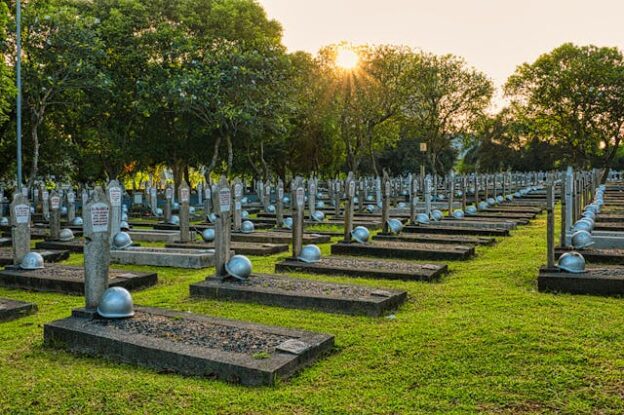
Preparing for a Cemetery Burial Service to Ensure a Memorable Farewell
Preparing for a cemetery burial service to ensure a memorable farewell is a process that requires thoughtfulness, sensitivity, and a deep understanding of the emotional and logistical complexities involved. At one of the distinguished Charlotte, NC cemeteries, we are committed to offering a service that not only honors the memory of your loved one but also provides a comforting and supportive environment for those left behind. Recognizing the significance of this final farewell, we emphasize dignity, respect, and personalization in all our services.
Immediate Burial Services: A Prompt and Respectful Farewell
The loss of a loved one can be sudden and unexpected, leaving families with the daunting task of arranging a respectful farewell in a limited time. Our immediate burial services are designed to ease this burden, offering a straightforward and dignified option. Our team is ready to swiftly handle all necessary arrangements, ensuring that your loved one is laid to rest with the utmost respect and care.
Graveside Services: Personal Touches for a Meaningful Goodbye
Graveside services offer a more intimate setting for families and friends to come together and honor the memory of the deceased. Set against the serene backdrop of the cemetery, these gatherings allow for personalized tributes, such as selected readings, favorite music, and custom ceremonies that reflect the unique spirit and life of the departed. This personalization ensures that the service is not only a farewell but a celebration of the individual’s life and legacy.
Memorial Services: Celebrating a Life Well-Lived
Our memorial services provide a versatile platform for families to celebrate the life of their loved one. Whether through catered receptions, multimedia tributes, or storytelling, we facilitate a space where memories can be cherished and legacies honored. These services allow for a broader expression of grief and remembrance, accommodating the diverse ways in which people choose to remember and celebrate their loved ones.
Burial Options: Honoring Every Legacy
Understanding the importance of choice in honoring your loved one, we offer a range of burial options. From traditional in-ground burials to above-ground mausoleums, each option is curated with care, respect, and consideration for the wishes of the deceased and their families. Our goal is to provide a fitting and dignified final resting place that respects the legacy and preferences of every individual.
The Funeral Procession: A Final Tribute
The funeral procession represents the last journey of the deceased, a profoundly symbolic moment that offers a chance to honor their life in a meaningful way. Our selection of vehicles, including traditional hearses and elegant carriages, allows families to choose a mode of transport that best reflects the personality and life of their loved one. This final tribute is a poignant reminder of the journey we all share and the individual paths we take through life.
Reliable Support for Every Step of the Journey
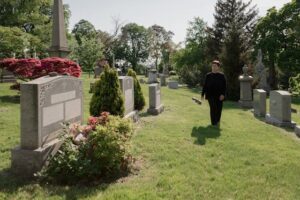 Our dedication to the Charlotte, NC, community remains steadfast as we constantly seek to refine and improve our services, aiming to offer comfort and support in times of grief. By combining empathy, professionalism, and meticulous attention to detail, we are committed to assisting you through the intricate process of organizing a cemetery burial service at our esteemed cemetery in Charlotte, NC. We ensure that your farewell is not just a memorable tribute but also a step toward healing.
Our dedication to the Charlotte, NC, community remains steadfast as we constantly seek to refine and improve our services, aiming to offer comfort and support in times of grief. By combining empathy, professionalism, and meticulous attention to detail, we are committed to assisting you through the intricate process of organizing a cemetery burial service at our esteemed cemetery in Charlotte, NC. We ensure that your farewell is not just a memorable tribute but also a step toward healing.
Gethsemane Cemetery and Memorial Gardens invite you to reach out for more information on how we can assist you in crafting a farewell that honors your loved one in a way that is both meaningful and personal. Our doors are always open to those in need of compassionate support and expert guidance during this challenging journey.
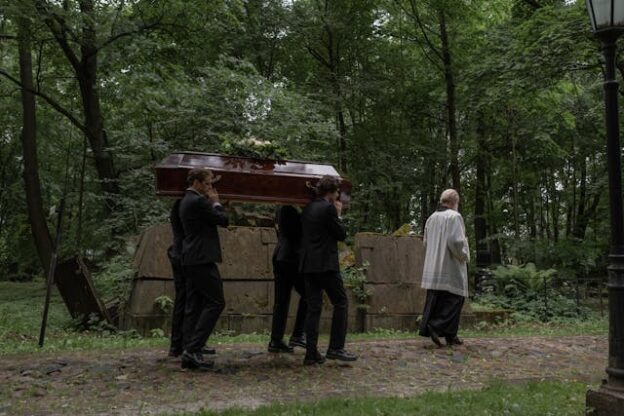
Why Some Families Choose Family Cemetery Plots
Choosing family cemetery plots in Matthews, NC cemeteries is a tradition that many families hold dear, offering a way to keep generations connected in a shared resting place. Gethsemane Cemetery and Memorial Gardens is a place where this profound connection is deeply understood and facilitated with the utmost respect and care. Opting for a family plot is not only about honoring those who have passed but also about creating a legacy and a tangible link to the past for future generations. It provides a dedicated space where families can come together to remember, celebrate, and find peace in the enduring bond of family lineage. This practice underscores the importance of heritage, continuity, and the perpetual remembrance of loved ones, cementing a sense of belonging and togetherness that transcends time.
The Bond of Family Legacy
Choosing family cemetery plots is a deeply rooted tradition that many find comforting, as it symbolizes the unity and continuity of the family even after death. Having a singular resting place for generations reinforces the bond among family members, offering a shared space to reflect on ancestors’ lives, celebrate their memories, and maintain a tangible connection to the past. This practice of securing family plots is not merely about the physical space but the emotional and spiritual significance it holds in keeping the family together through the ages.
Maintaining Tradition and Heritage
For numerous families, selecting a family cemetery plot is a means to honor traditions and preserve heritage. It provides a way to pass down stories, values, and histories from one generation to the next, ensuring that future generations understand their roots and the lineage from which they come. This continuity is vital for many in keeping the family’s legacy alive, as it fosters a sense of identity and belonging tied to their ancestors’ resting place.
A Place for Collective Mourning and Celebration
Family plots serve as a central location where current and future generations can come together to mourn, celebrate, and commemorate their loved ones. They offer a communal space for family events, such as anniversaries, birthdays, and memorial services, allowing families to honor those they have lost in a familiar and sacred space. This shared experience of grief and remembrance strengthens family ties and provides comfort and solace to those left behind.
The Practical Benefits of Family Plots
Beyond emotional and symbolic reasons, choosing a family cemetery plot also has practical benefits. It simplifies the burial process for future generations, ensuring that there is a pre-determined place for them, which can relieve the stress of making arrangements during times of grief. Moreover, investing in a family plot can be cost-effective, as purchasing spaces together often comes at a reduced rate compared to individual plots, making it a financially prudent choice for many.
Creating a Lasting Monument to Family History
Ultimately, securing a family cemetery plot is about creating a lasting monument to the family’s history. It serves as a physical embodiment of the family’s journey through time, anchored in a shared plot that bears witness to the family’s endurance and evolution. For many, it’s about leaving a legacy that future generations can visit and honor, ensuring that the memories and contributions of those who have passed are forever remembered and valued.
In conclusion, the choice to secure family cemetery plots in Matthews, NC cemeteries like Gethsemane Cemetery and Memorial Gardens reflects a deeply rooted desire to maintain familial bonds through generations. It’s a tradition that not only honors the legacy and heritage of families but also provides a sacred space for collective mourning, remembrance, and celebration. These plots serve as a lasting monument to family history, offering a shared resting place that keeps the spirit of the departed close to their loved ones, ensuring that their stories and memories continue to be a source of strength and inspiration for future generations.
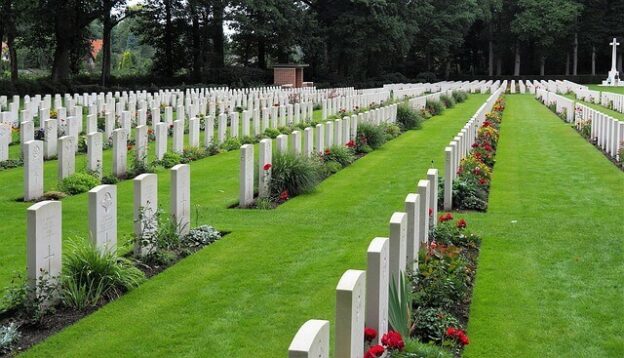
Respecting End of Life Wishes at Veterans Cemetery
Respecting the end-of-life wishes of those who served our country is a deeply honorable commitment, particularly at veteran’s cemeteries where the legacy of bravery, sacrifice, and patriotic service is preserved. In Huntersville, NC cemeteries, such as Gethsemane Cemetery and Memorial Gardens, this commitment is taken to heart, ensuring that each veteran’s final wishes are honored with the utmost dignity and respect. The serene environment, coupled with meticulous care, provides a fitting final resting place that reflects the esteem with which we hold our service members. The dedicated staff works closely with families to ensure that ceremonies, memorials, and the overall resting experience align with the personal and military honors veterans deserve. This thoughtful approach ensures that the legacy of our heroes is perpetuated, offering solace and a place of remembrance for loved ones.
Understanding Veterans’ Final Wishes
Respecting the end-of-life wishes of veterans is a profound gesture of gratitude and reverence for their service. It’s essential to honor these wishes with care and dignity, ensuring that their final resting place reflects the honor and valor they demonstrated throughout their lives. Veterans’ cemeteries across the nation are dedicated to providing a solemn and respectful environment, where the services rendered, and sacrifices made by military personnel are commemorated appropriately. These special resting places are designed to reflect the courage and patriotism of those who served, ensuring that their legacy is honored for generations to come.
The Importance of a Proper Ceremony
A proper ceremony at a veterans’ cemetery is not just about protocol; it’s a powerful symbol of appreciation and respect for those who have served. These ceremonies, often steeped in military tradition, offer a moment of collective remembrance and a personal touch to the farewell. They serve as a final salute to the individual, acknowledging their contribution to national security and the freedoms enjoyed by citizens. It’s a poignant reminder of the sacrifices made by the service member and their families.
Personalizing the Resting Place
While veterans’ cemeteries follow certain protocols, there is room for personalization within the bounds of respect and tradition. Families and loved ones can choose markers, flags, and other symbolic items that reflect the personality and service of the departed. This personal touch adds a layer of individuality to the memorial, making it a more fitting tribute to the veteran’s life and legacy. Personalizing the resting place helps families feel a closer connection and offers a more intimate form of remembrance.
Supporting Families Through the Process
 Supporting the families of veterans during the funeral and burial process is crucial. Many veterans’ cemeteries and related services offer counseling and assistance to help families navigate the often-complex processes involved in planning a military funeral. This support includes everything from paperwork and arranging honors to emotional support during the ceremony. Providing compassionate guidance helps ease the burden on families, allowing them to focus on honoring their loved one’s memory without undue stress.
Supporting the families of veterans during the funeral and burial process is crucial. Many veterans’ cemeteries and related services offer counseling and assistance to help families navigate the often-complex processes involved in planning a military funeral. This support includes everything from paperwork and arranging honors to emotional support during the ceremony. Providing compassionate guidance helps ease the burden on families, allowing them to focus on honoring their loved one’s memory without undue stress.
Respecting the end-of-life wishes at veterans’ cemeteries is a deeply meaningful act that honors our heroes’ legacies and sacrifices. Huntersville, NC cemeteries, particularly at Gethsemane Cemetery and Memorial Gardens, are committed to providing a dignified and respectful environment that reflects the valor and service of our nation’s veterans. By ensuring that these final wishes are honored, we not only pay homage to the individuals who served but also offer solace and a place of remembrance for their families. It’s through these acts of reverence and remembrance that we continue to express our enduring gratitude and respect for those who have dedicated their lives to protecting our freedoms.

Finding Peace of Mind Through Online Cemetery Preplanning
In the swiftly moving currents of modern life, the practice of preplanning for life’s unavoidable events has evolved into a higher level of thoughtfulness and anticipation. For local residents, the option of online preplanning at Charlotte, NC cemeteries, serves as a reassuring guide, delivering tranquility and certainty in the process of commemorating loved ones. This approach underscores the significance of being prepared, allowing families to thoughtfully and leisurely choose final resting places and services within the serene confines of their own homes.
The Essence of Preplanning
Preplanning is essentially about giving oneself and one’s family the gift of time and thoughtfulness. It alleviates the burden on loved ones during times of grief and ensures that final wishes are respected and fulfilled. This thoughtful process allows for a celebration of life that is reflective of the individual’s values and desires, making it an integral part of the grieving and healing journey.
A Sanctuary of Peace and Reflection
At the core of our community, a distinguished cemetery offers a sanctuary of peace and reflection. Known for its empathy, professionalism, and decades-long commitment to families, this memorial garden encapsulates a serene environment where memories are treasured and legacies honored. Its online preplanning services are designed to provide a seamless, respectful experience, ensuring meticulous attention to every detail.
The Value of Preplanning Services
The digital approach to preplanning democratizes the process, making it accessible and straightforward. It empowers individuals to explore options, ask questions, and make informed choices regarding plots, monuments, or services. Beyond logistical arrangements, preplanning is about crafting a lasting tribute that mirrors the unique life and essence of the departed, offering families a profound sense of solace and connection.
Navigating Life and Loss with a Trusted Partner
In the complexities of life and loss, the significance of having a trusted partner cannot be overstated. We stand committed to guiding our community through these moments with compassion and respect. By embracing online cemetery preplanning, you afford yourself and your loved ones peace of mind, knowing that final wishes will be honored with the dignity they deserve.
We warmly invite you to explore this meaningful journey towards creating a final tribute that resonates with love, honor, and timeless memory. As we advance into the digital age, let’s seize the opportunity to celebrate life and legacy in the most respectful and meaningful manner. Preplanning with us not only eases the burden on families during challenging times but also ensures that every life is commemorated in a manner echoing peace, love, and remembrance.
A Thoughtful Journey Ahead
 Preplanning embodies a thoughtful journey that offers profound tranquility, guaranteeing the meticulous fulfillment of last wishes. Advancing with the digital resources available to us, we reinforce our pledge to offer the families a planning process through Charlotte, NC cemeteries, that is not only impactful but also comforting. Opting for online preplanning signifies a pivotal move in celebrating life and legacy with utmost grace and honor.
Preplanning embodies a thoughtful journey that offers profound tranquility, guaranteeing the meticulous fulfillment of last wishes. Advancing with the digital resources available to us, we reinforce our pledge to offer the families a planning process through Charlotte, NC cemeteries, that is not only impactful but also comforting. Opting for online preplanning signifies a pivotal move in celebrating life and legacy with utmost grace and honor.
For more information or to start this essential planning process, please don’t hesitate to reach out to Gethsemane Cemetery and Memorial Gardens. Together, we can craft a tribute that stands as a lasting emblem of love and memory, ensuring your legacy or that of your loved ones is preserved for generations to come.

Benefits of Pre-Planning with the Ideal Cemetery
Pre-planning cemetery arrangements is a thoughtful way to ease the future burden on loved ones, ensuring that your final wishes are honored and providing peace of mind for yourself and your family. The benefits of this process are numerous and profound. Engaging with the ideal Charlotte, NC cemeteries for pre-planning purposes allows individuals to take their time to consider all options, including location, type of memorial, and financial planning. It means making informed, unhurried decisions that align with personal values and family traditions. Gethsemane Cemetery and Memorial Gardens offer a compassionate and respectful setting for these important considerations, assisting clients through the process with empathy and expertise.
By tending to arrangements in advance at a preferred cemetery, one can personalize the finer details while alleviating potential stress on family members during a time of loss. This foresight also locks in current prices, safeguarding against the rise in costs over time. Moreover, pre-planning is an act of love, a final gift to those you hold dear, sparing them from making difficult decisions under emotional distress. It’s about taking control, leaving a legacy, and resting assured that when the time comes, everything is in place—exactly as you envisioned, at a place like Gethsemane Cemetery and Memorial Gardens, synonymous with dignity and serenity.
Peace of Mind Through Pre-Planning
Pre-planning one’s final resting place with an ideal cemetery offers immeasurable peace of mind, both for oneself and for family members. It allows for thoughtful decisions without the pressures that often accompany a time of grief. Making these choices in a calm and reflective atmosphere ensures that personal preferences are communicated and respected, thereby eliminating guesswork for surviving relatives and ensuring that one’s final wishes are fulfilled with precision and care.
Financial Benefits and Price Protection
Financial foresight is one of the prime advantages of pre-planning with a cemetery. By planning ahead of time, you can take advantage of today’s costs, effectively shielding your family from the effects of inflation. Pre-payment plans further extend the benefit of managing your budget on your terms, allowing you to allocate funds gradually and prevent the financial burden from falling on your loved ones unexpectedly.
Personalizing Your Legacy
The act of pre-planning empowers you to personalize your legacy in a way that reflects your life story. From the choice of memorials to the selection of a plot that resonates with your spirit, pre-planning opens the door to creating a personal and meaningful tribute. It gives you the ability to set the tone for how you want to be remembered, ensuring that every detail honors the unique life you’ve led.
Alleviating Emotional Stress for Family
By pre-planning with a cemetery, you significantly alleviate the emotional burden that can overwhelm your family during a time of mourning. With the major decisions already taken care of, your loved ones are spared from the stress of making arrangements and can focus on their healing journey. This compassionate foresight minimizes potential conflicts and brings solace knowing that everything is arranged according to your wishes.
Navigating the Process with Expert Guidance
Choosing to pre-plan with a reputable cemetery often means you have access to expert guidance throughout the entire process. Cemetery professionals are well-equipped to answer your questions, offer recommendations based on experience, and assist in laying out the blueprint for your eternal place of rest. Their support transforms what could be an overwhelming process into a manageable and meaningful experience, providing reassurance that no detail will be overlooked.

Embracing the process of pre-planning with Charlotte, NC cemeteries bestows profound benefits, and Gethsemane Cemetery and Memorial Gardens stands committed to guiding you through every step. This thoughtful preparation is a compassionate act, ensuring that your final wishes are honored while providing the gift of solace and certainty to loved ones. It leaves behind a legacy of care, showcases the epitome of personalization, and captures the essence of responsibility by choosing the ideal resting place well ahead of need. Please don’t hesitate to reach us for immediate assistance.

Seize Serenity with Strategically Placed Cemetery Lots
In the quest for peace and a fitting tribute to loved ones, the strategic placement of cemetery lots plays a pivotal role. At Matthews, NC cemeteries, this principle is taken to heart, ensuring that each chosen spot provides the serenity and dignity families seek. Gethsemane Cemetery and Memorial Gardens exemplify this approach, offering spaces that are not only beautifully maintained but are also situated to foster a sense of calm and reflection. Whether set beneath the gentle shadows of towering trees or overlooking serene landscapes, the location of a cemetery lot can significantly contribute to the comfort of visiting family and friends.
Intentionality in the selection process allows for personal preferences to be honored, catering to desires for proximity to specific landmarks or natural elements within the cemetery. This mindful consideration is what helps create a sense of perpetual peace and personal connection to the resting place. As one traverses the tranquil paths of such carefully curated spaces, the belief that our choices today craft the legacy for tomorrow becomes ever more poignant. It is this commitment to excellence and attention to detail that sets places like Gethsemane Cemetery and Memorial Gardens apart, as they provide not just a lot, but a cherished place for remembrance.
Embracing Tranquility in Final Resting Places
Finding a final resting place for ourselves or our loved ones is a decision that encompasses much more than just purchasing a plot of land. It involves seizing serenity through strategically placed cemetery lots that resonate with personal meaning and provide a tranquil environment. This strategic placement ensures that visitors can experience a sense of peace and solace, surrounded by well-kept landscapes that pay homage to the memories of those resting there. A serene environment fosters a space where reflection is welcomed, and the beauty of nature aids in the healing process.
Considerations for Selecting a Peaceful Spot
The selection of a cemetery plot involves considering various elements that contribute to its peacefulness. Factors such as the proximity to nature, the view, and the sounds that surround the area play a significant role. When choosing a lot, envisioning future visits and the feelings they will evoke can guide you toward a place that feels both respectful and comforting. The aim is to find a spot that feels like a personal retreat for those who come to remember and celebrate the life that was lived.
Design and Landscape Impact on Serenity
The design and landscaping of a cemetery are key factors in creating an atmosphere of serenity. Curated paths, tranquil water features, and thoughtful placement of benches are aspects that invite contemplation and reflection. A well-designed cemetery lot becomes a sanctuary for both visitors and those who rest there, a testament to the care and foresight put into the overall aesthetic and embrace of nature’s calm.
The Role of Personalization in Memorialization
Personalization in the context of cemetery lots is about creating a space that truly reflects the individual. Attention to detail in the selection process ensures that a person’s final resting place aligns with their unique story or preferences. This might include considerations such as the direction the lot faces, its location relative to paths and trees, or the types of flora that will surround it. A personalized approach to selecting cemetery lots ensures that everyone’s essence is captured and cherished.
Ensuring Longevity Through Careful Selection
Strategic placement goes hand in hand with considering the long-term care and maintenance of a cemetery lot. Ensuring that a chosen spot will continue to provide comfort and beauty for years to come requires foresight into the sustainability and upkeep of the site. It’s about making an informed choice that will stand the test of time and offer a timeless sanctuary for enduring remembrance.
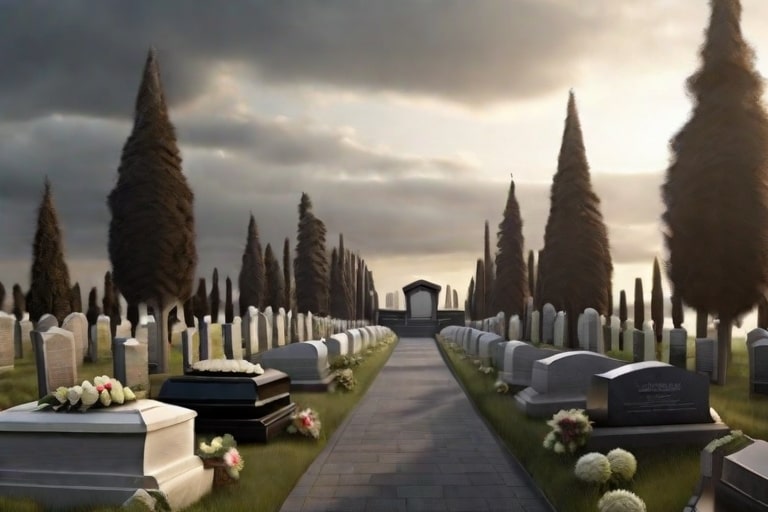
In the search for enduring tranquility, the strategic selection of cemetery lots within Matthews, NC cemeteries can provide a sanctuary of peace that stands the test of time. Places like Gethsemane Cemetery and Memorial Gardens understand the importance of location and landscape in creating a solemn and dignified resting place. Choosing a lot becomes a loving gesture, ensuring that the memories held therein are cradled in beauty and serenity, offering comfort to those who come to pay their respects and reflect on cherished moments shared. To provide you high standard of service, connect with us today.

